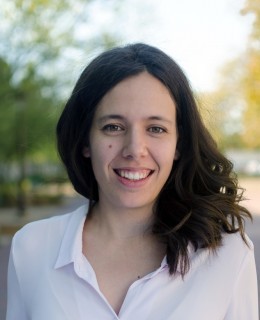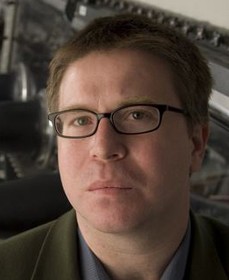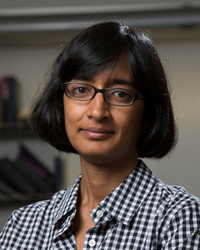Columbia’s atomic and molecular experts explore the quantum states of atoms and molecules and how these particles interact. To do so, we are developing new techniques and tools to precisely capture and control individual atoms and molecules.
Our work has important implications for expanding our knowledge about atomic, molecular, and even fundamental physics, as well as applications in quantum optics and novel devices, like quantum simulators and quantum computers.
Key Faculty
Latest News & Research
In a highly interdisciplinary collaboration, researchers across Columbia Engineering, Columbia University Department of Chemistry, Shanghai Normal University, and the University of Copenhagen have upended conventional wisdom, synthesizing the first molecule capable of insulating at the nanometer scale more effectively than a vacuum barrier.
Experiments track a simple molecule dissociating to find when the reaction can be described with a quantum model and when a semiclassical one will do.
Leaders in the field of ultracold molecule research from Columbia and Harvard Universities are teaming up to propel understanding of the quantum mechanics of chemical reactions.
Physics Today covers new research on molecular clocks from Columbia Physicist Tanya Zelevinsky
Columbia researchers Sebastian Will (Physics), Ana Asenjo-Garcia (Physics), and Nanfang Yu (Applied Physics) have been awarded $2 million for a project aimed at extending the excited state lifetime of atoms.
Columbia team discovers 6nm-long single-molecule circuit with enormous on/off ratio due to quantum interference; finding could enable faster, smaller, and more energy-efficient devices
A series of interactive workshops developed by Columbia physicist Sebastian Will and STEMteachersNYC will give educators tips and tools to cover quantum science in their classrooms.
With 2021 drawing to a close, Columbia physicists note the biggest quantum advances they saw last year and what may be coming as we head into 2022.
Columbia chemists contribute to a ground-up approach to designing customizable qubits.
Calculations from Ana Asenjo-Garcia and Stuart Masson reveal that any atom array is capable of bursting—a sign that atoms are syncing up.
The theoretical physicist is recognized for her work on light-matter interactions in ultracold atoms.
The experimental physicist uses quantum control of molecules to study fundamental science.
One of four mid-career researchers selected, Zelevinsky will use the $2 million award to advance the use of molecules to study fundamental science.
A new study from researchers at Columbia University suggests carbon molecules can be laser-cooled to ultracold temperatures, raising the possibility of studying the fundamental properties of these molecular building blocks.
Debayan Mitra, a polyglot postdoc working with physicist Tanya Zelevinsky, is building an ultracold toolbox of atoms, molecules, and atoms-split-from molecules to understand the tiny world of quantum mechanics.
Zelevinsky accepted the award in Stereodynamics of Chemical Reactions at the 2022 Stereodynamics Conference in Crete, Greece, where she presented a talk on photodissociation and high-precision spectroscopy with trapped ultracold molecules.
Niccolò Bigagli, a sixth-year PhD candidate in physics, explains how he and filmmaker Ramey Newell created their award-winning short film.
A clock that ticks using vibrations of strontium molecules could be used to test Albert Einstein’s theory of relativity or to search for forces that have yet to be described.
Researchers in the Zlab have attained a 100-fold increase in the accuracy of a molecular clock that could serve as a terahertz-frequency standard and as a platform for investigating new physics.
A team at Columbia University and University of Warsaw recently created a highly accurate molecular clock that could be used to study new physical phenomena.
Time, for Tanya Zelevinsky, is very much of the essence. At her physics lab at Columbia University in New York City, she is building a version of an ‘optical lattice clock’ — a device that can reach such unprecedented accuracy that it would lose only one second over millions or even billions of years.
A new technique takes a bosonic gas to its lowest temperature yet and a step closer to a molecular Bose-Einstein condensate.
Researchers at Columbia are a step closer to isolating the simplest atom in the universe, with light.
The $1.32 million grant from the Moore Foundation will support efforts to create a molecular Bose-Einstein Condensate.
A quantum state of matter comprising molecules with opposite charges at each end has been made for the first time. It could help probe our understanding of the quantum properties of exotic materials.
Targeted small-scale experiments, including in the lab of Tanya Zelevinsky, look to find smoking guns—or at least to rule out possibilities.
The result could have broad implications in areas such as space travel, volcanic eruptions and GPS systems.



